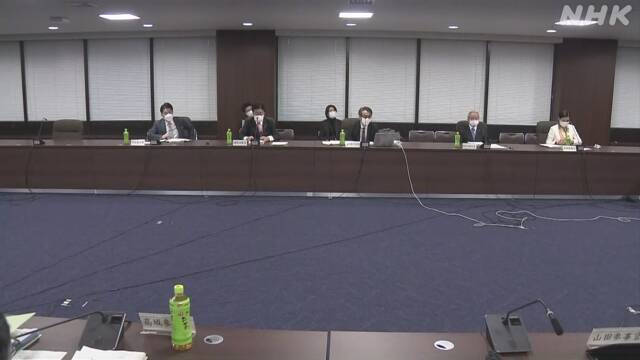An expert meeting was held by the Ministry of Health, Labor and Welfare to advise on countermeasures against the new coronavirus, and it was analyzed that the number of new infections continued to decline and is expected to continue to decline in the future.
On the other hand, he points out that influenza is expected to continue to increase, and that it is necessary to continue to pay attention to simultaneous epidemics.
The expert meeting said that the current infection situation continues to decline nationwide, and that the number of group infections at elderly care facilities and medical institutions is also on the decline, and that the trend is expected to continue nationwide in the future. We are analyzing that
In addition, although the number of people who die and the number of cases in which emergency transportation is difficult are still at a high level, they are on a downward trend.
However, it is pointed out that there is a tendency that a large proportion of infected people are in their 80s or older, and that continued caution is necessary.
In addition, the proportion of the Omicron strain "BQ.1", which is said to be more susceptible to evading immunity, is increasing in Japan, and the Omicron strain "XBB.1.5", which has been reported mainly in the United States and has been detected in Japan as well. It is necessary to continue to monitor the trends of mutated viruses such as.
On the other hand, regarding seasonal influenza, which has entered the epidemic season nationwide, the increase in the number of reports is expected to continue, although the rate of increase is expected to decrease, and it is necessary to continue to pay attention to simultaneous epidemics with the new corona. .
Until the position of the novel coronavirus under the Infectious Diseases Act is shifted to "Category 5", the expert meeting will strengthen the medical system to provide appropriate medical care to the elderly and those at high risk of becoming seriously ill. He points out the need for focus.
In addition to calling for vaccination against the Omicron strain, we are requesting that you prepare an antigen test kit that you can test yourself and prepare for infection.
In addition, thorough basic infection control measures such as eating and drinking with as few people as possible, avoiding loud voices and staying for a long time, wearing a mask when talking, ▽ thorough ventilation, and ▽ refraining from going out when you have symptoms continue to call
The number of new infections in a week decreased by 0.72 times compared to the previous week in all prefectures
According to the materials presented at the Ministry of Health, Labor and Welfare's expert meeting, the number of new infections in the week until the 7th was 0.72 times the number of the previous week nationwide, continuing a downward trend in all prefectures.
Among the three prefectures in the Tokyo metropolitan area,
▽ Tokyo is 0.67 times,
▽ Kanagawa Prefecture is 0.71 times,
▽ Saitama Prefecture is 0.74 times, and
▽ Chiba Prefecture is 0.66 times, and the downward trend continues.
In Kansai,
▽Osaka Prefecture is 0.72 times,
▽Kyoto Prefecture is 0.77 times,
▽Hyogo Prefecture is 0.75 times,
▽
Aichi Prefecture is 0.71 times,
▽Gifu Prefecture is 0.76 times, and
▽Mie Prefecture is 0.70 times.
All prefectures have decreased compared to the previous week.
The number of infected people per 100,000 people in the most recent week was
▽ Mie prefecture with 335.26 people, the highest in Japan,
followed by
▽ Kagawa prefecture with 326.44 people,
▽ Yamaguchi prefecture with 325.32 people,
▽ Tokushima prefecture with 320.61 people,
▽ Shizuoka prefecture.
319.00 people in the prefecture
, ▽
142.16 people in Tokyo, ▽ 206.34 people in
Osaka Prefecture,
and
▽ 213.54 people nationwide.

